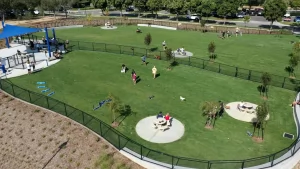NO, THIS IS NOT A GUIDE ON “HOW TO NAP ON A PARK BENCH“!
THIS IS A GUIDE ON “HOW TO PREVENT IT“!
In larger cities, finding individuals sleeping on your park benches may not be out of the ordinary. Fortunately, in the small city of Lexington, VA where our headquarters office is located, this does not present much of a problem. However, in a city not so far away from us, loitering on park benches seems to be causing an issue. The article title reads:
“BENCHES REMOVED FROM PARKS TO KEEP HOMELESS FROM LOITERING”

Now, while that may seem like the best solution…we beg to differ! Removing benches because people are hanging out on them and using them too much doesn’t seem like a problem but perhaps it’s the fact that people are sleeping on them. Every park deserves to have park benches, here is how you can keep them:
1. If you are looking to purchase new benches to replace old ones or are constructing a new park, perhaps your best option to avoid individuals sleeping on your benches and disrupting other people while enjoying the landscape is to purchase shorter benches. While a longer bench will provide more seating and you would need less of them, if you will be placing these benches in an area where homeless people tend to hang out, a shorter bench will make it difficult for a tired wanderer to stretch out.
2. If purchasing new benches is out of your budget then amending your existing ones is certainly an option. By placing a sleep inhibitor on your existing benches, you are putting a piece in the middle of your bench (on the seat) that will interfere with homeless people getting comfortable on your benches. The great thing is that we also have these little accessories for tables and table seats if it’s your picnic tables that are being transformed into a bed at night.

Completely removing all of your benches may not be the best solution. Give us a call at 877.777.3700 and let us help you with other options that will help you keep your benches (and picnic tables)!
ParknPool | Lexington, VA | sales@parknpool.com | 877.777.3700




 Recycled content products contain “recovered materials” or “post-consumer materials” or both. “Recovered materials” means materials that have been removed or diverted from solid waste – in other words, trash – including solid waste created by manufacturers. “Post-consumer materials” are materials that we discard at home and at work that are separated or diverted for recycling instead of going to a landfill. Whatever your job, you will most likely be asked to purchase products from recycled materials. Employees in facilities and maintenance may be asked to purchase
Recycled content products contain “recovered materials” or “post-consumer materials” or both. “Recovered materials” means materials that have been removed or diverted from solid waste – in other words, trash – including solid waste created by manufacturers. “Post-consumer materials” are materials that we discard at home and at work that are separated or diverted for recycling instead of going to a landfill. Whatever your job, you will most likely be asked to purchase products from recycled materials. Employees in facilities and maintenance may be asked to purchase  Packaging is a significant solid waste problem. Approximately 23.7% of the volume and 19.4% of the weight in materials found in city landfills is attributed to just packaging alone. The amount of trash we generate can be reduced simply by buying products with reduced packaging. Consider buying a larger quantity in a single box rather than smaller quantities in multiple boxes.
Packaging is a significant solid waste problem. Approximately 23.7% of the volume and 19.4% of the weight in materials found in city landfills is attributed to just packaging alone. The amount of trash we generate can be reduced simply by buying products with reduced packaging. Consider buying a larger quantity in a single box rather than smaller quantities in multiple boxes. Site amenities should be based on comfort and user friendliness, choosing one piece over another depends on the overall style and design of the space. For example, in some areas movable tables and chairs are more suitable than permanent mounted site amenities. Also, an attractive color can enliven a space and attract people to use it but comfort is an important factor in purchasing a
Site amenities should be based on comfort and user friendliness, choosing one piece over another depends on the overall style and design of the space. For example, in some areas movable tables and chairs are more suitable than permanent mounted site amenities. Also, an attractive color can enliven a space and attract people to use it but comfort is an important factor in purchasing a  Observing how people use amenities will help in selecting the right kind for your particular area. For example, keep in mind that two-seat benches where there may be only one person sitting at each bench creates a waste of seating. There are also special considerations depending on the environment, such as:
Observing how people use amenities will help in selecting the right kind for your particular area. For example, keep in mind that two-seat benches where there may be only one person sitting at each bench creates a waste of seating. There are also special considerations depending on the environment, such as: Maintenance is essential in all public areas. Choosing furniture and amenities that are easy to clean and store will help your maintenance crew. Products that are low maintenance can be a better deal than some of their more expensive counterparts, it all depends on how much time and resources you can devote to the upkeep.
Maintenance is essential in all public areas. Choosing furniture and amenities that are easy to clean and store will help your maintenance crew. Products that are low maintenance can be a better deal than some of their more expensive counterparts, it all depends on how much time and resources you can devote to the upkeep.